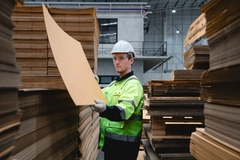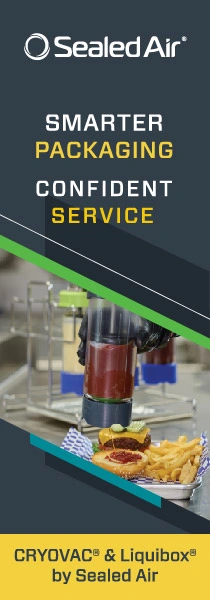Industry moves to fiber-based solutions as recyclability and consumer demands rise
Key takeaways
- Regulations and consumer demand are accelerating the shift to recyclable and compostable fiber packaging.
- Manufacturers are adopting advanced software, IoT, and cloud systems to optimize production and reduce waste.
- New solutions include molded fiber formats, recyclable coatings, direct food contact inks, and high-performance renewable boards.
Regulations, technological innovations, and consumer preferences are propelling the fiber-based packaging industry. We speak to experts from Aicomp, ProAmpac, PulPac, Stora Enso, and the newly merged Sabert and Colpac about how the industry is responding to this transformation.
“We’re observing a substantial shift across the industry toward fiber-based solutions, particularly those that are recyclable or compostable. This momentum is being accelerated by plastic reduction initiatives, including EPR legislation,” Ray Recchia, global innovation manager of sustainable paper packaging at ProAmpac, tells Packaging Insights.
Andrew Grimbaldeston, European commercial director at Sabert and Colpac, says that the UK’s packaging EPR (pEPR) and the EU’s Packaging and Packaging Waste Regulation (PPWR) and EU Deforestation Regulation (EUDR) frameworks are advancing at different speeds and with varying requirements. “This can make navigating compliance more complex, particularly when working with fiber-based composites.”
At the start of the year, Innova Market Insights’ Top Packaging Trends for 2025 predicted that the shift toward “paperization” and “fiberization” would continue to accelerate. This expectation has proven accurate amid increasingly stringent regulations targeting non-recyclable packaging.
Meanwhile, Daniella Kohler, global key account manager at Stora Enso North America, tells us that the primary challenge for fiber packaging providers in North America is a fragmented regulatory landscape.
“Unlike Europe’s more unified approach through directives like the PPWR, we’re seeing different US states implementing varying EPR requirements, with California's SB 343 likely to set some of the tone for or influence recyclability standards nationwide.”
Grimbaldeston adds: “Despite these complexities, fiber-based packaging is still increasingly popular. Years of progress have shown that these materials can deliver functionality and sustainability in tandem.”
“The industry’s commitment to fiber-based innovation, alongside strong media support and consumer preference for paper-based packaging, is unlikely to reverse.”
Recchia points out: “Beyond regulation, consumer preference is playing a significant role. Brands are responding to increased demand for packaging that aligns with environmental values, and fiber-based options are becoming a natural fit.”
Operational trends in fiber
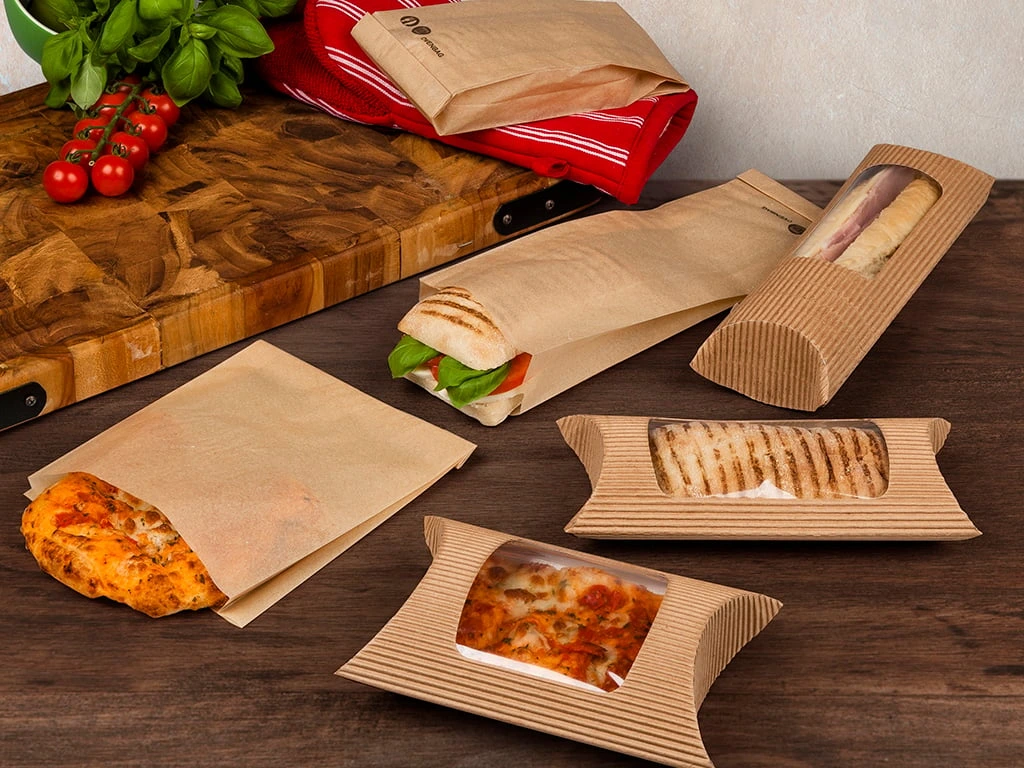 Paper-based food contact packaging for sandwiches by Sabert and Colpac (Image credit: Sabert and Colpac).Patric Klatte, head of marketing at Aicomp, a service providing specialized Enterprise Resource Planning configuration software for fiber-based packaging manufacturers, says that the software addresses the computational complexity inherent in modern packaging.
Paper-based food contact packaging for sandwiches by Sabert and Colpac (Image credit: Sabert and Colpac).Patric Klatte, head of marketing at Aicomp, a service providing specialized Enterprise Resource Planning configuration software for fiber-based packaging manufacturers, says that the software addresses the computational complexity inherent in modern packaging.
“Aicomp manages thousands of material combinations, production routes, and customer specifications while maintaining rapid response times. VCPowerPack, our most mature SAP add-on [a software component], delivers deep industry functionality including Fefco and Ecma standards support, board-grade calculations, and multi-stage conversion process management.”
Klatte says the system automates master data generation and costing, enabling manufacturers to reduce quote times from hours to minutes and ensuring technical feasibility.
He highlights several operational trends shaping the industry:configuration complexity and mass customization, predictive operations,integrated digital infrastructure, data-driven decision making, and cloud adoption.
Concerning configuration complexity and mass customization, Klatte notes that manufacturers are managing increasingly diverse product portfolios driven by e-commerce growth and brand differentiation demands.
“The shift from standardized packaging to customized solutions requires sophisticated configuration logic that balances customer requirements with production constraints,” he says.
The industry is also moving from reactive to predictive approaches to operations, according to Klatte.
 (002).webp) ProAmpac’s ButterFresh is a fiber-based, grease resistant material for butter and dairy wraps (Image credit: ProAmpac).“Manufacturers are implementing IoT sensors and analytics to anticipate production needs, optimize resource utilization, and improve overall equipment effectiveness. This shift represents a fundamental change in how packaging operations are managed.”
ProAmpac’s ButterFresh is a fiber-based, grease resistant material for butter and dairy wraps (Image credit: ProAmpac).“Manufacturers are implementing IoT sensors and analytics to anticipate production needs, optimize resource utilization, and improve overall equipment effectiveness. This shift represents a fundamental change in how packaging operations are managed.”
Management and cloud-based solutions
On integrated digital infrastructure, Klatte says manufacturers are moving beyond isolated software systems toward fully integrated platforms where configuration, production planning, waste optimization, and quality management operate as unified ecosystems with real-time data exchange.
“Manufacturers with integrated systems are leveraging historical data for predictive analytics, pricing optimization, and production planning. Machine learning applications are evolving from experimental to production deployment.”
The packaging industry increasingly embraces cloud-based solutions for scalability and accessibility, particularly for manufacturers operating across multiple sites or managing distributed sales teams, according to Klatte.
Meanwhile, beyond sustainability mandates, manufacturers are recognizing waste reduction as a direct path to improved profitability. “Advanced calculation engines and optimization algorithms help minimize material consumption throughout the production process.”
Latest fiber offerings
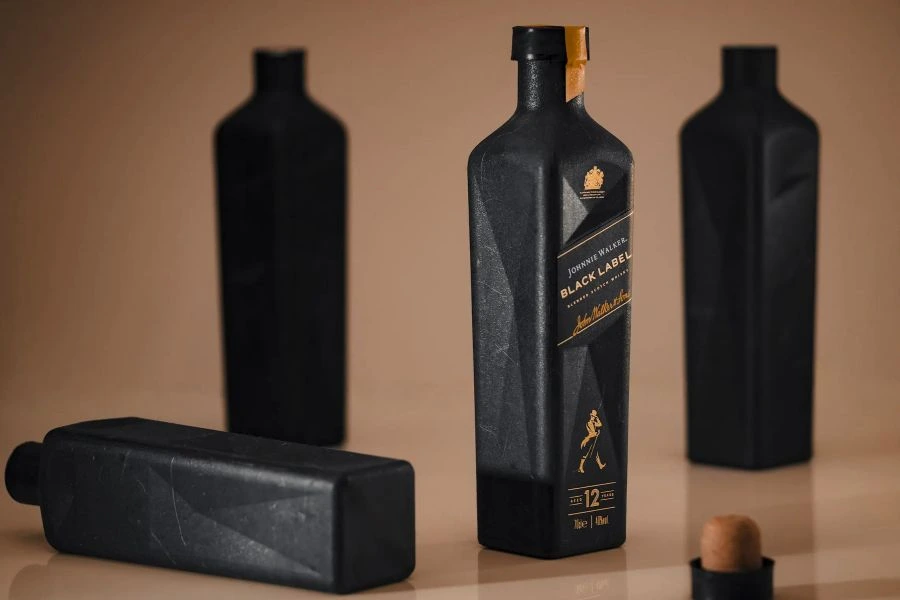 PulPac’s paper bottle for Johnnie Walker whiskey (Image credit: PulPac).On the other side of operational transformation, fiber packaging producers tell us more about their latest consumer-facing solutions and innovations within the space.
PulPac’s paper bottle for Johnnie Walker whiskey (Image credit: PulPac).On the other side of operational transformation, fiber packaging producers tell us more about their latest consumer-facing solutions and innovations within the space.
Recchia points to ProAmpac’s Pro-EVO solutions, which are curbside recyclable within standard fiber recycling streams, “offering a grease-resistance option for multiwall applications without compromise strength or durability.”
Additionally, the company’s ButterFresh is certified as home compostable and said to offer “excellent” grease resistance and a dead-fold alternative for butter and dairy wraps “that maintain product freshness and integrity.”
Sanna Fager, chief commercial officer at PulPac, says the company’s Dry Molded Fiber is available at a competitive price and is environmentally sustainable in its essence.
“Together with HZ Green Pulp, we recently reached full-scale commercial production of coffee lids, showing what’s possible here and now,” Fager continues.
“Meanwhile, the Bottle Collective keeps pushing fiber’s limits, earning international recognition for the Johnnie Walker paper bottle — 90% paper and with 47% lower CO2 than glass. It’s a good example of how we combine ready-to-market solutions with longer-term innovation.”
Functional sustainability
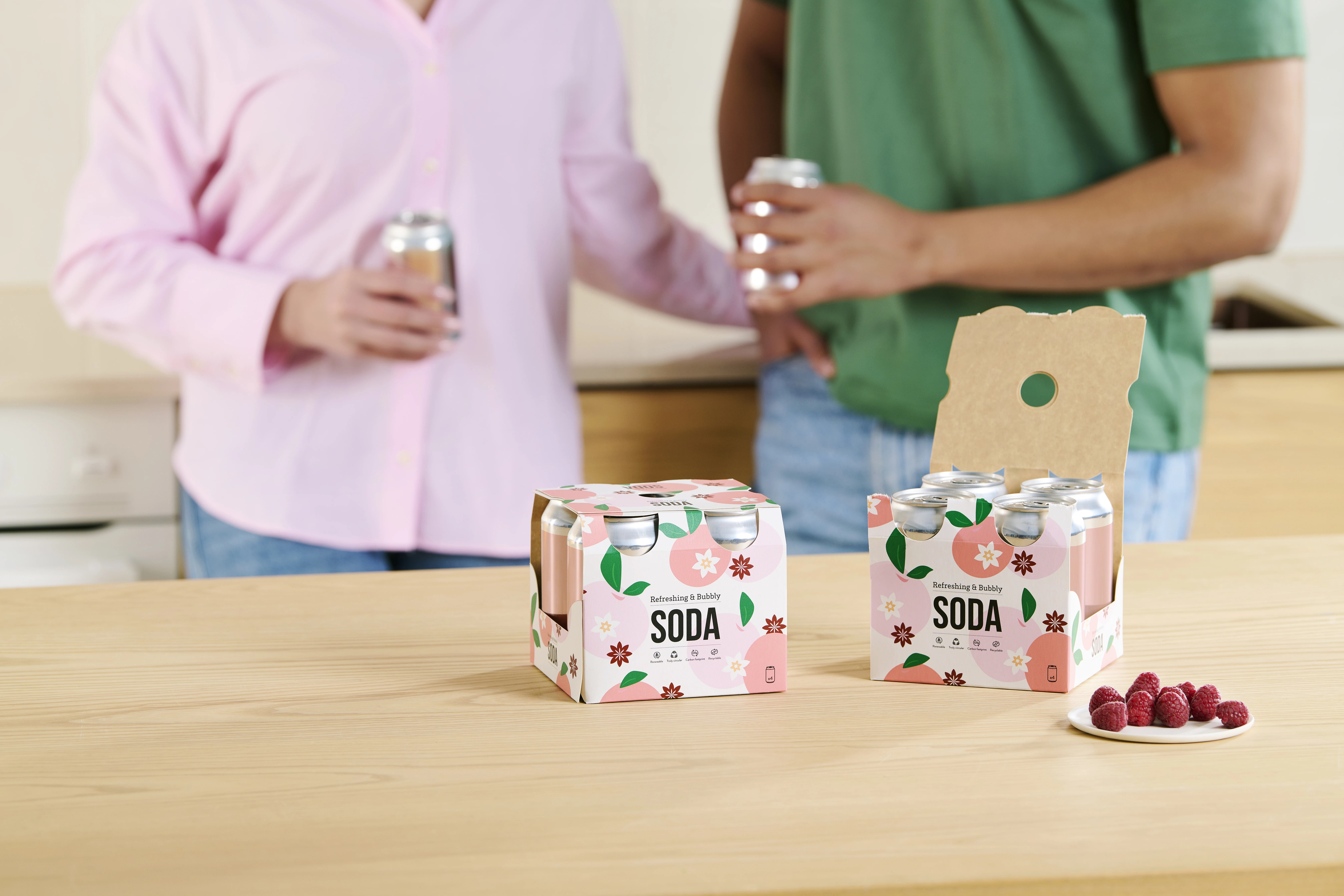 Consumer board production line end-products made at Stora Enso’s Oulu mill (Image credit: Stora Enso).Fager further sees a rising interest in molded fiber use in the lifestyle and retail categories.
Consumer board production line end-products made at Stora Enso’s Oulu mill (Image credit: Stora Enso).Fager further sees a rising interest in molded fiber use in the lifestyle and retail categories.
“Our collaboration with Future Materials explores how fiber can be both functional and part of a brand’s identity. In today’s market, sustainable packaging must perform, make sense commercially, and resonate with consumers.”
Meanwhile, Grimbaldeston tells us that brands are seeking low-cost solutions that balance sustainability, functionality, and visual appeal.
“To meet these needs, Sabert and Colpac have pioneered the use of direct food contact inks in foodservice, helping several customers to remove plastic laminates and elevate the presentation of their food.”
He argues these solutions use materials derived from renewable resources, simplify material use and recycling through paper and board waste streams, and reduce pEPR costs.
“At the same time, the direct food contact inks and coatings enhance print quality and enable brands to print on the inside of packs, offering more opportunities to entice consumers through impactful brand messaging and eye-catching design.”
Kohler says Stora Enso’s Oulu mill in Finland is designed to meet North America’s growing demand for high-performing and renewable packaging materials.
“The mill brings increased capacity for three board grades, including coated kraft back and two grades of folding box board, used in beverage carriers, food packaging, cosmetics, beauty and personal care, as well as pharmaceuticals.
“Our packaging materials are based on renewable raw materials and are fit for recycling, meaning the value of the materials is retained for multiple loops. It starts with renewable raw materials sourced from sustainably managed forests.”







